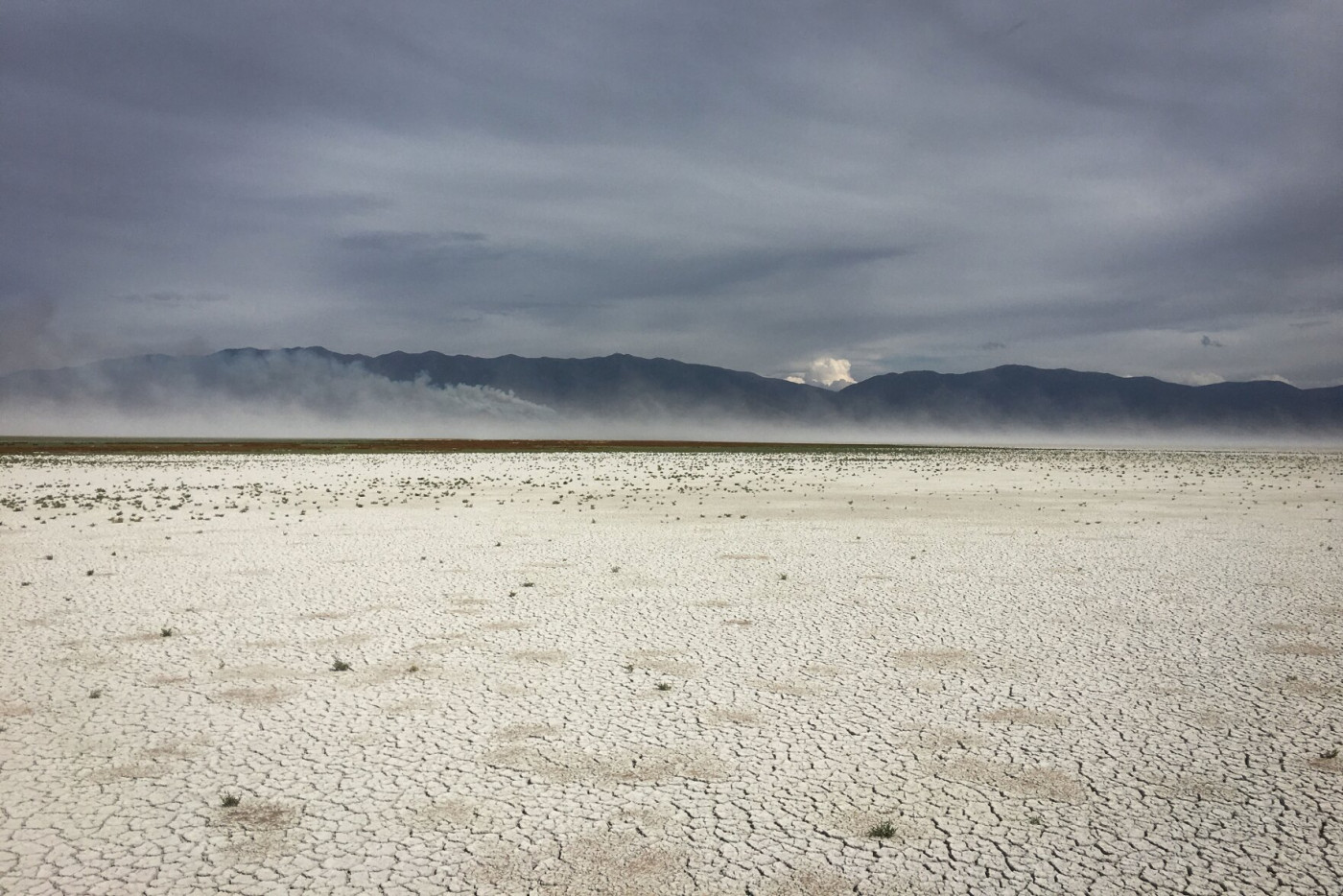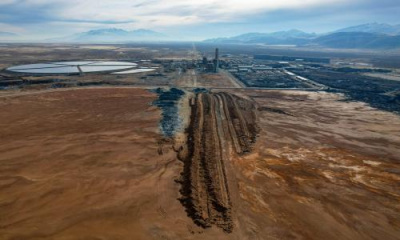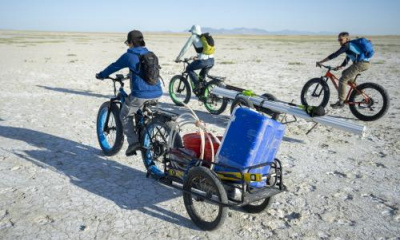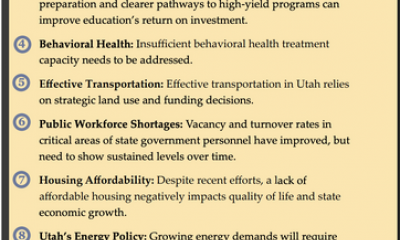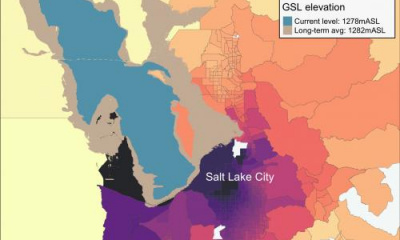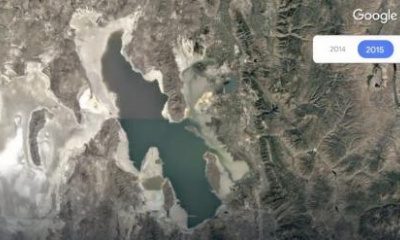The scenario reads more like apocalyptic science fiction than reality. The Great Salt Lake recedes and an ecological disaster, fanned by the wind, hits the Wasatch Front. But it’s not fiction. A team of graduate students at Utah State University is measuring airborne dust from the exposed lake bed as the water retreats, and some of that dust is laden with toxins.
“When strong winds blow across the lake bed, polluted dust can be lofted into suspension and transported into ecosystems and urban areas along Utah’s Wasatch Front,” said Molly Blakowski, a graduate student at USU’s Watershed Sciences Department and one of the project’s researchers.
As the iconic landmark, and once big-time recreation destination, becomes more parched, what impacts will carry past the shoreline? While that dust could lead to worse air quality year-round, Blakowski pointed out that the health impacts are unknown.
This interview has been edited for length and clarity.
Pamela McCall: What toxins are in the dust from the exposed bed of the Great Salt Lake?
MB: We were motivated to analyze the composition of dust being produced from the dry lakebed because, as a terminal lake, the Great Salt Lake accumulates pollution from across its entire watershed. So you can think of it like a bathtub without a drain. For over a century, the lake bed sediments have been slowly accumulating byproducts of human activities like mining, smelting and agricultural runoff. We've seen that the dust may contain elevated levels of potentially toxic heavy metals and manmade organic chemicals.
PM: What dangers are posed to people living in and near Salt Lake City, where air quality is already compromised?
MB: So when strong winds blow across the lake, bad polluted dust can be lofted into suspension and transported into ecosystems and urban areas along Utah's Wasatch Front. We're chemists and environmental scientists, not toxicologists. So further work is needed to evaluate specific health risks and how much somebody would need to be exposed to in order to experience those negative health effects.
PM: Tell us about how the exposed dust toxins bind with existing air pollution to make it even nastier.
MB: We know that when mineral dust is kicked up into the atmosphere, it can interact with other gaseous pollutants that are already in the air. Maybe those emitted by oil refineries, emitted by smelters or by our vehicles. So it can change as it's moving through communities. It can change composition before it's deposited in the mountains.
PM: Why is more toxic dust being released now?
MB: The longer that the lakebed is exposed, the more time the protective crust has to weather down and release fine sediments that can be picked up by the wind. So because the lake bed hasn't been exposed for very long, this protective crust is still doing a great job protecting us from increased emissions of Great Salt Lake dust. But the elements cause it to weather away. And we're becoming more concerned that we're seeing increased dust emissions from the lakebed the longer the sediments are exposed.
PM: What are we in for in the coming years if more of the lake bed is exposed due to ongoing water diversion and drought?
MB: Dust storms in Utah, maybe like those you saw last week, are not unusual during tax season. Increased dust emissions from Great Salt Lake could lead to worse air quality year-round because dust storms are most common when we, for the most part, have a respite from the other flavors of bad air quality that we suffer from here.
PM: How will farmland and snowpack be impacted by toxic dust?
MB: Dust emitted from the lakebed could potentially have consequences for natural ecosystems or farmland that are downwind from the lake. Dust can alter the composition of soils and lead to uptake in plants. And as we know, dust darkens the surfaces of ice and snow, which can lead to accelerated melt rates and could have implications for regional snow water resources.
PM: What does that feel like as a researcher to monitor what could be the start of an ecological disaster of immense proportions?
MB: If I can do my job correctly, I can show that we have a huge challenge that we're facing. But because this problem is largely human-caused, it can also be largely human-solved, and I feel optimistic about that. Increasing lake levels can help mitigate the risks of dust emissions from Great Salt Lake.
KUER Morning Edition Associate Producer Leah Treidler contributed to this report.

